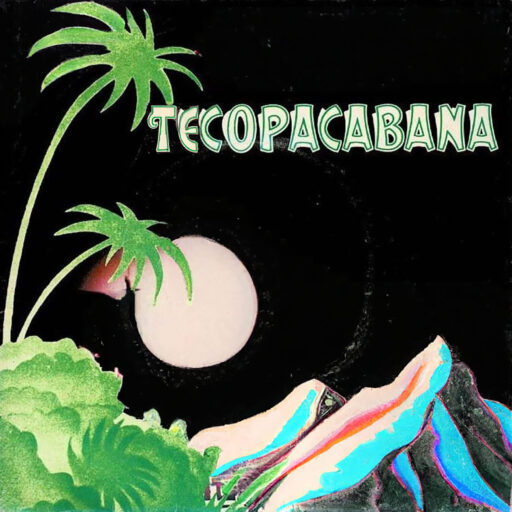A 2022 doctoral study from the University of Nevada, Las Vegas has highlighted Tecopa as part of a groundbreaking look at how desert communities can better manage their most limited resources — water, energy, and food — in a changing climate.
The dissertation, “Nexuscapes: A Landscape Approach for a Transdisciplinary Water-Energy-Food Nexus Decision-Making Process,” was written by Fortino Acosta for his Ph.D. in Civil and Environmental Engineering. It offers a new way to think about how people live within desert systems, using Southern Nevada as a case study that includes Tecopa and nearby areas in the Amargosa region.
Tecopa’s Place in the Desert Map
In Acosta’s mapping of 26 regional landscapes across Southern Nevada, Tecopa appears as Landscape Character Unit SNV17 — one of several desert environments identified for their unique mix of natural systems and human presence. The landscape classification, known as a Landscape Character Assessment, looks at each area’s geology, vegetation, water sources, wildlife, land uses, and cultural identity to understand how people and nature interact.
Tecopa stands out because it combines natural geothermal features, open desert terrain, and long-standing human use. The surrounding area includes the Amargosa basin and nearby playas and mountains that influence groundwater flow and desert ecology. The dissertation’s ecosystem service analysis ranks Tecopa as contributing both regulating services (like soil stability and carbon storage) and cultural services (such as recreation, heritage, and emotional connection to place).
This means Tecopa’s landscape is valued not only for its environmental role but also for how people experience and identify with it. It is part of the desert’s living system — a landscape that regulates natural processes while holding social and cultural meaning for the communities that depend on it.
By including Tecopa in the same analytical framework as places like the Amargosa Valley, Tonopah Dunes, and Spring Mountains, Acosta’s study situates the town within a network of interdependent desert landscapes that together shape the region’s future. Tecopa’s distinct combination of geothermal water, rural settlement, and cultural character makes it an important reference point for how small desert communities fit into the broader picture of water, energy, and food sustainability.
A Framework for Desert Decision-Making
The dissertation combines two main tools:
- Doughnut Economics, a model that measures how human needs and the environment can stay in balance, and
- Landscape Character Assessment, a mapping process that describes what makes each landscape unique.
By combining these, Acosta created what he calls a “Nexuscapes” model — a method to look at how water, energy, and food systems affect one another and how they can be better planned across regions like Southern Nevada.
The study uses maps, data, and charts to connect issues such as water use, renewable energy potential, and food production to the places they happen on the ground. Tecopa is part of that picture, especially for its natural resources and rural setting at the edge of the Mojave and Great Basin ecosystems.
What Inyo County Can Learn
Although the research focuses on Nevada’s side of the desert, its approach applies directly to Inyo County, which shares the same arid ecosystems and faces similar pressures on water, energy, and land use.
Acosta’s framework offers a clear takeaway: planning for the desert’s future works best when water, energy, and food are treated as connected parts of the same system. For county planners and residents alike, that means considering how local actions — such as water pumping, solar development, or food supply decisions — affect the desert’s overall balance.
Inyo County could use the same type of landscape-based analysis to make more informed decisions about resource management, renewable energy siting, and sustainable land use, especially in communities like Tecopa that depend on delicate groundwater systems and geothermal sources.
Why It Matters to Tecopa Today
As Tecopa continues to grow modestly while maintaining its identity as a hot springs and nature-based destination, Acosta’s study offers a reminder that the town’s landscape is an asset, not a blank slate.
The “Nexuscapes” model calls for regional cooperation that links water, energy, and food planning rather than separating them. For residents, this could mean supporting efforts toward energy self-sufficiency through solar and geothermal systems, protecting local water quality, and exploring small-scale food production suited to desert conditions — all ideas consistent with the study’s findings.
The dissertation also stresses that local participation and cross-disciplinary collaboration are essential for desert sustainability. Even though Tecopa is small, its inclusion in the study’s mapping shows that rural communities are part of the regional solution. By understanding how their land fits into the larger desert system, residents and county planners can make better choices about future development, tourism, and conservation.
A Map Toward the Future
Acosta’s work ultimately provides a tool for long-term thinking in desert environments. It shows how landscapes like Tecopa can contribute to regional stability if managed with awareness of their ecological strengths and limits.
For Inyo County and its residents, the study offers both a warning and a path forward: the desert’s resources are finite, but when understood as part of a connected system, they can sustain life, culture, and community far into the future.
Source: Fortino Acosta, “Nexuscapes: A Landscape Approach for a Transdisciplinary Water-Energy-Food Nexus Decision-Making Process,” University of Nevada, Las Vegas (2022).


Leave a Reply